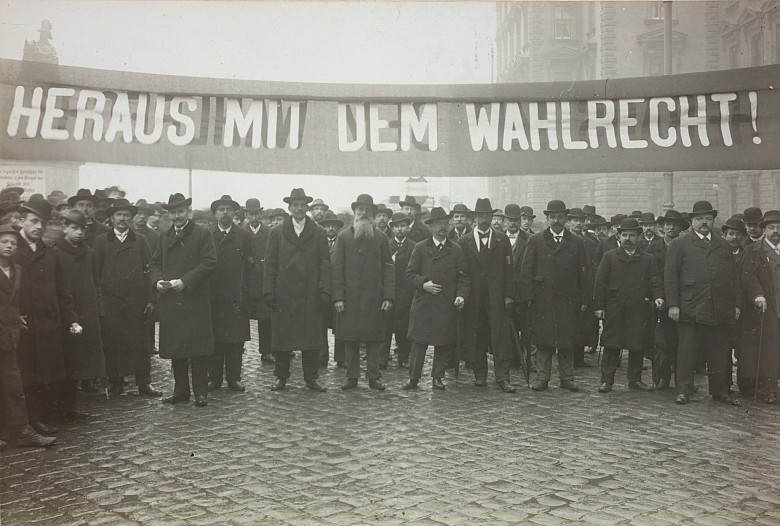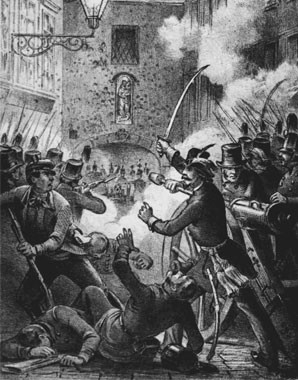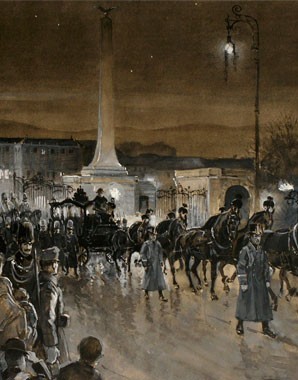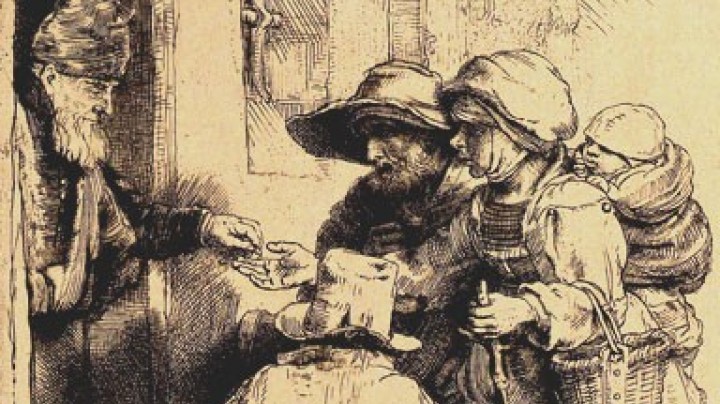A classless civil society? Or: the price of democracy
Utopian visions such as a secure income for all or the abolition of class differences have not been implemented even today. But the introduction of equal and universal suffrage in 1918 constituted a first step towards the implementation of democracy in Austria.
One of the socio-political ideas that had been discussed ever since the European revolutions of 1789 to 1848 was the ideal of a ‘classless civil society’ composed of autonomous individuals. In this society, everyone would have a secure income, and there should be no excessive differences in wealth. This middle class, as a universal social category, would be open to all, but membership would be dependent upon certain preconditions. These were industry, education and property rather than the hereditary claims that predominated in the aristocracy. These equal citizens would then also have equal opportunities for political participation.
The passing of an electoral law in the 1848 revolution constituted a first step towards participation in the political process. However, from 1861, after the interlude of neoabsolutism, Austria had census suffrage, in which only certain people had the right to vote. Until 1873 members of parliament were not elected directly, but by representatives sent by the provincial assemblies. Only men who could show a minimum tax liability (census) of 10 gulden were allowed to vote. In addition the weighting of votes was spread amongst different electoral curias, for which reason this was referred to as ‘curia suffrage’. The higher the tax payment and taxation class, the greater the weight of the vote. Only some six per cent of the twenty million inhabitants of the Austrian part of the Empire were entitled to vote, a number which included propertied women. With the electoral reform of 1882 the minimum tax threshold was reduced to five gulden. This reform made it possible for many people from the lower middle-class and rural classes to cast a vote. Workers, day-labourers, servants, agricultural labourers and people who depended on financial support were still excluded. Under Prime Minister Kasimir Felix Badeni a fifth curia was introduced in 1896 for which there was no minimum tax qualification. This ‘general class of electors’ was open to all male citizens from the age of 24, which caused a major increase in the electorate. There was still an imbalance, however, in the proportions of votes: in the first curia sixty-four voters were needed to send a representative to parliament, but in the ‘general class of electors’ the number was 70,000.
It was the Social Democratic Workers’ Party with their mass demonstrations which provided the major impetus for suffrage along modern lines. The Suffrage Demonstration of 28 November 1905 proved decisive in bringing about the universal, equal, direct and secret suffrage for all male citizens to which Emperor Franz Joseph gave his assent two years later.
About half of the population was still excluded from the right to vote, namely all women. Their situation actually worsened, since previously, like men, they had been classified as entitled or not entitled to vote on the basis of their property. It was only with the decree of 12 November 1918 that women also obtained the right to vote.
















